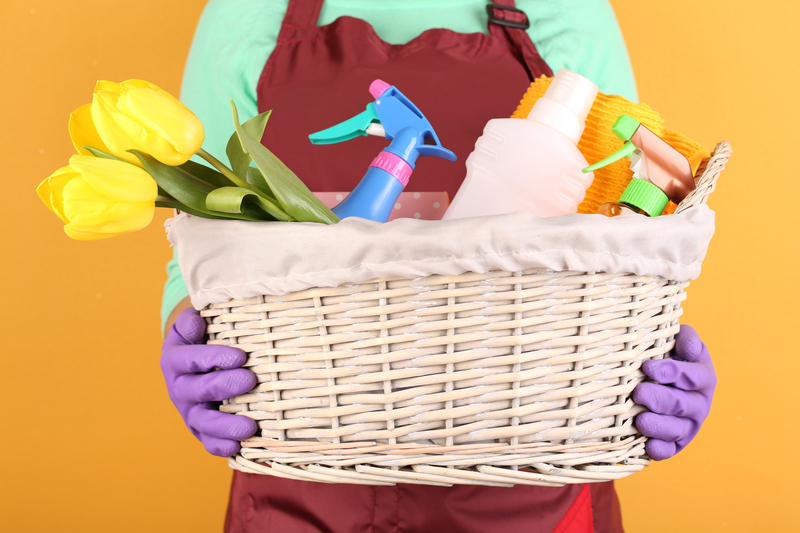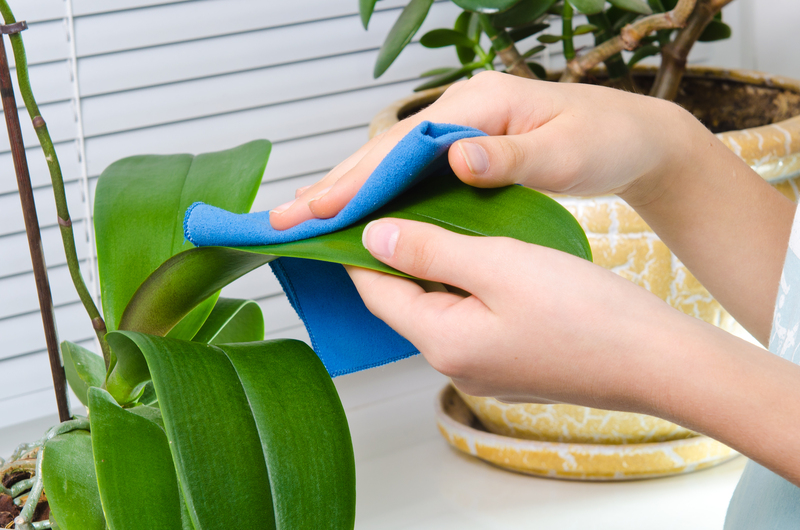Discover the Best Methods for Curtain Maintenance
Posted on 30/05/2025
Discover the Best Methods for Curtain Maintenance
Maintaining your curtains not only keeps them looking fresh and beautiful, but also extends their lifespan. Whether you have sheer drapes, heavy blackout curtains, or delicate silk panels, proper curtain maintenance is essential for a clean and healthy home. In this comprehensive guide, we'll reveal everything you need to know about the best ways to care for your curtains, including professional tips, at-home techniques, and maintenance schedules. Get ready to discover the top methods for curtain cleaning and upkeep that will help you enjoy dust-free, vibrant window treatments all year long.

Why Curtain Maintenance Matters
Before we dive into the most effective techniques, it's important to understand why curtain maintenance matters. Curtains not only add beauty and warmth to a space--they also act as filters, capturing airborne dust, allergens, and odors.
- Healthy Indoor Air: Regular curtain cleaning reduces the buildup of dust mites, pet dander, and pollen, leading to better air quality.
- Longer Curtain Lifespan: Proper routine care can prevent irreversible fabric damage, discoloration, and wear.
- Enhanced Home Appearance: Clean curtains instantly refresh any room, supporting a tidy and welcoming home environment.
Main Issues Affecting Curtain Condition
- Dust and Dirt: Accumulation makes curtains look dull and can affect respiratory health.
- Sun Exposure: Direct sunlight can fade fabrics and weaken fibers.
- Moisture & Mold: Humidity can encourage mildew development, leading to staining and odors.
Now, let's uncover the best methods for curtain maintenance every homeowner should know.
How Often Should You Clean Curtains?
Cleaning frequency depends on factors like curtain type, household activity, and local climate, but there are some general guidelines:
- Light Maintenance: Every 1-2 weeks (dusting, vacuuming)
- Deep Cleaning: Every 4-6 months (washing, dry cleaning)
- Spot Treatment: As needed for spills or stains
Pro tip: Always check manufacturer labels for curtain-specific care instructions before cleaning.
Routine Curtain Maintenance Methods
1. Dusting and Vacuuming Curtains
Dusting is the simplest way to prevent dirt buildup. Use a soft brush or microfiber duster to gently go over your curtains from top to bottom, paying special attention to pleats, folds, and hems where dust gathers.
- Vacuuming Curtains: Use your vacuum's upholstery attachment. For delicate fabrics, wrap a piece of cheesecloth over the nozzle for extra gentleness.
- Tip: Always vacuum in a downward motion to avoid stretching or pulling the fabric.
2. Shaking Out Curtains
If your curtains are easy to remove, take them outside on dry, breezy days and give them a good shake. This simple step can dislodge dust and prevent allergies, especially in households with pets or smokers.
3. Spot Cleaning Stains
Address small stains immediately to prevent them from setting. Blot the area gently with a damp, clean cloth and a mild fabric detergent. Always test any cleaner on a hidden section to check for discoloration or fabric damage.
- Oil-based stains: Use a bit of dish soap
- Water-based stains: Try diluted vinegar or a mild soap solution
- Important: Never rub vigorously; pat or dab instead
The Best Deep Cleaning Techniques for Curtain Care
1. Machine Washing Curtains
Some curtains, such as cotton or polyester varieties, are machine-washable. Check the care label, then:
- Remove curtain hooks, rings, and hardware
- Use a gentle cycle with cold or lukewarm water
- Add a mild detergent; avoid bleach
- Shake out curtains before hanging them back up to help reduce wrinkles
Pro tip: To protect delicate curtains, place them in a large mesh laundry bag or pillowcase before washing.
2. Hand Washing Curtains
For delicate fabrics such as lace, silk, or voile, hand washing is the safest option. Here's how:
- Fill a large basin or tub with cool or lukewarm water
- Add a gentle detergent, mixing thoroughly
- Submerge curtains and swish gently
- Rinse thoroughly to remove all soap
- Gently squeeze (don't wring) excess water
Hang to air dry. Avoid direct sunlight to prevent fading.
3. Professional Dry Cleaning
Velvet, wool, and some lined or interlined drapes require professional dry cleaning. Always send these to a reputable cleaner for safe, thorough treatment.
- Look out for "dry clean only" on care labels
- If unsure, consult a local specialist--many offer in-home evaluation for difficult installations
4. Steam Cleaning Curtains
Steaming is a fantastic curtain maintenance method for synthetic, heavy, or non-removable curtains. A handheld garment steamer can sanitize and refresh curtains quickly, removing dust mites and odors without harsh chemicals.
- Hold the steamer several inches from the fabric
- Move slowly downward, allowing the steam to penetrate
- Note: Never use steam on silk or velvet
Special Curtain Maintenance Tips
Dealing with Sun Damage
Sunlight can cause colors to fade and fibers to weaken over time. Protect curtains by:
- Using lining or blackout backing on sun-facing windows
- Rotating your curtains or switching panels seasonally to distribute wear
- Adding UV-protective window film
Mold Prevention
To guard against mold and mildew:
- Keep windows open when weather allows for air flow
- Use a dehumidifier in humid climates
- Wash or spot-treat any visible mold immediately with a solution of one part vinegar to four parts water
Wrinkle Management
If your freshly cleaned curtains have wrinkles, try these solutions:
- Hang them straight from the washer and let gravity do the work
- Lightly iron on a low setting (always check care label)
- Use a hand steamer for quick touch-ups
Pet Hair and Odor Removal
Pets can leave hair and lingering smells on curtains. Address this by:
- Vacuuming weekly with an upholstery attachment
- Using a lint roller or slightly dampened rubber glove to pick up hair
- Misting curtains occasionally with fabric freshener or vinegar-water spray
The Ultimate Curtain Maintenance Checklist
- Weekly: Dust, vacuum, or shake out curtains
- Monthly: Inspect for stains, mold, or pet hair buildup and perform spot treatments as needed
- Every 3-6 Months: Deep clean according to fabric type (wash, steam, or dry clean)
- Seasonally: Rotate or switch curtains to balance sun exposure and fading
- Annually: Inspect hardware, rods, and rails for dust and integrity
Common Mistakes to Avoid in Curtain Care
- Overwashing: Too frequent washing can damage fibers
- Using harsh chemicals: Bleach or strong detergents break down fabric dyes and fibers
- Not checking labels: Always consult manufacturer instructions for specific guidelines
- Wringing or twisting fabrics: This can stretch and weaken curtains
- Skipping sun protection: Unlined curtains on sunny windows fade quickly
Choosing Curtain-Friendly Maintenance Products
To achieve the best curtain maintenance results, always use:
- Mild, fragrance-free detergents
- Non-abrasive, soft-bristled brushes
- Vacuum attachments designed for delicate fabrics
- Fabric-safe stain removers
*Avoid fabric softeners, as they can leave residues and attract dust.*
Professional Curtain Cleaning Services
If your drapes are exceptionally large, fragile, or difficult to remove, don't hesitate to use a local professional curtain cleaning service. Many offer onsite cleaning, ensuring minimal disruption and optimal results. Regular professional cleaning (every 1-2 years) can help preserve the color, texture, and structure of premium drapery, especially custom-made or investment pieces.

Frequently Asked Questions About Curtain Maintenance
1. How do you get rid of wrinkles without ironing?
- Hang damp curtains and let gravity smooth them out, or use a garment steamer for quick, gentle wrinkle removal.
2. Can I wash blackout curtains?
- Many blackout curtains require special care--hand washing or professional cleaning is typically best. Always check the label for guidance.
3. Is it okay to put curtains in the dryer?
- Most curtains should be air-dried to prevent shrinking or fiber damage. Only use low or no-heat drying for machine-washable types, if specified by the manufacturer.
4. How do I keep my curtains smelling fresh?
- Ensure regular ventilation in your home, vacuum curtains often, and use light fabric sprays as needed to neutralize odors.
5. What's the best method for allergy sufferers?
- Vacuum and dust frequently, and consider machine-washable curtains that can be laundered more often. Synthetic, non-absorbent fabrics are less likely to harbor dust mites.
Conclusion: The Secret to Pristine, Long-Lasting Curtains
Consistent curtain maintenance is the secret to enjoying clean, vibrant, and air-purifying drapes for years to come. By adopting a mix of regular dusting, prompt spot cleaning, periodic deep cleans, and intelligent sun and moisture management, you'll not only preserve your curtains--you'll also enhance your entire home's comfort and beauty.
Remember, the best curtain care methods always start with understanding your fabrics and following recommended guidelines. With these expert tips and proven techniques, your window treatments are guaranteed to stand the test of time, bringing elegance, warmth, and freshness to your living spaces.



